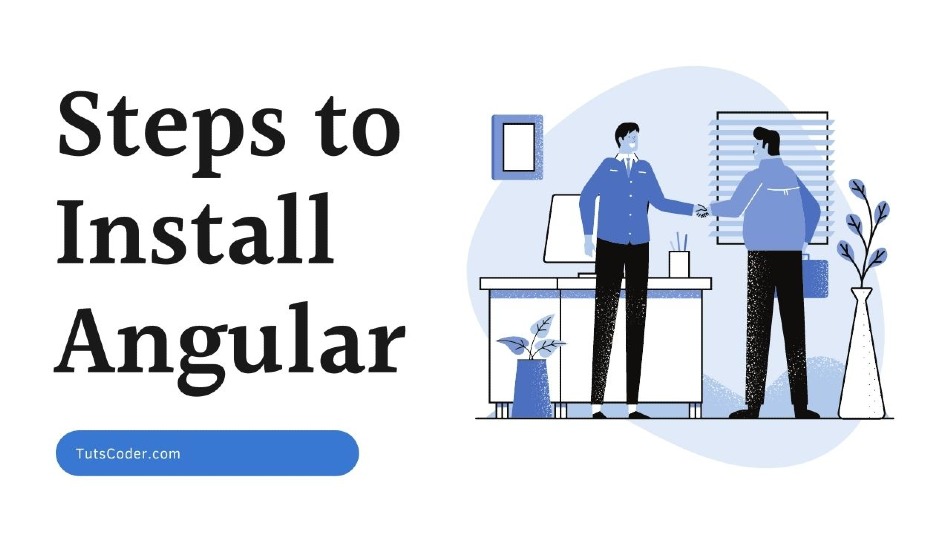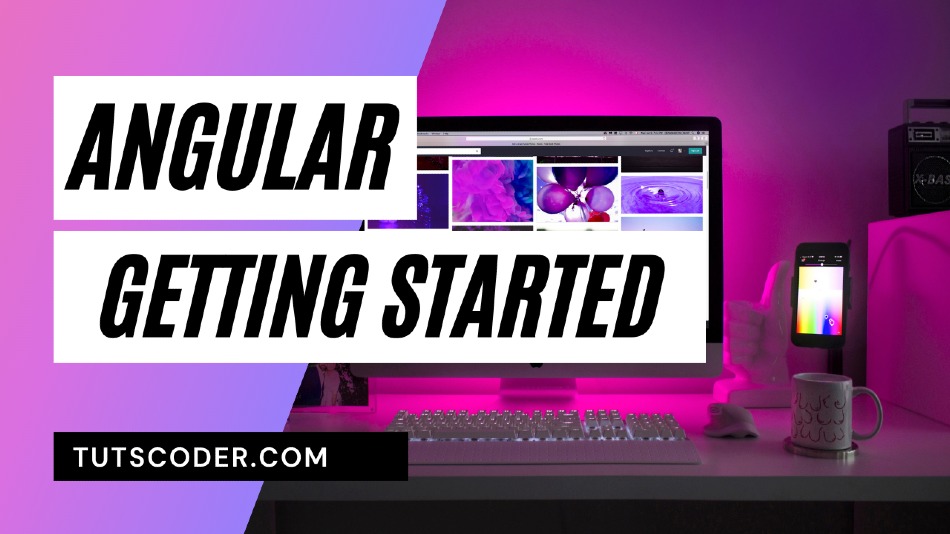Angular 20 represents the latest evolution in Google's popular web application framework, bringing enhanced performance, improved developer experience, and cutting-edge features for modern web development. Whether you're a beginner starting your Angular journey or an experienced developer upgrading from previous versions, this comprehensive guide will walk you through the entire installation process.
Installing Angular 20 correctly is crucial for your development workflow. A proper installation ensures you have access to all the latest features, security updates, and performance improvements that make Angular development more efficient and enjoyable.
Fortunately, if you already have experience with Angular 17,18 or 19 the process of starting a new Angular 18 project is pretty much the same.
Also read, Angular Introduction: What It Is, and Why You Should Use It
However, if you have no previous experience with Angular, don’t worry — installing Angular 18 is just a piece of cake.
So, let’s get started…
Install Angular 20 Step by step guide
Prerequisites
Before diving into the Angular 20 installation process, let's ensure your system meets all the necessary requirements. Having the right setup from the beginning will save you time and prevent common installation issues.
Required Knowledge
While this is a beginner-friendly guide, having basic knowledge of the following will be helpful:
JavaScript Basics
Command Line
HTML/CSS
Installing Node.js and npm for Angular 20
Node.js is the backbone of Angular development, providing the runtime environment and package manager (npm) needed for Angular 20. Let's install the latest LTS version of Node.js which is recommended for Angular 20 development.
Step-by-Step Node.js Installation
Option 1: Direct Download (Recommended for Beginners)
- Visit the official Node.js website
- Download the LTS version for your operating system
- Run the installer and follow the setup wizard
- Accept the license agreement and choose installation directory
- Ensure "Add to PATH" option is selected
Option 2: Using Package Managers
# Windows (using Chocolatey)
choco install nodejs
# macOS (using Homebrew)
brew install node
# Ubuntu/Debian
sudo apt update sudo apt install nodejs npm
Verifying Node.js Installation
After installation, open your terminal or command prompt and run these commands to verify everything is working:
# Check Node.js version
node --version
# Check npm version npm --version
# Expected output should be: # v20.x.x (or latest LTS version) # 10.x.x (or compatible npm version)If you don’t have knowledge of node.js then please check the getting-started-with-node.js article else continue here.
Step 1: Installing Angular CLI for Angular 20 Development
The Angular Command Line Interface (CLI) is your primary tool for creating, building, and maintaining Angular applications. The CLI makes Angular 20 development significantly easier by providing powerful commands and scaffolding capabilities.
The Angular CLI (Command Line Interface) is the quickest and easiest way to get started with an Angular 20 project.
We can use Angular CLI to Create New Projects, generate Application code and library code, and also develop tasks such as component generation, creating Application bundles, deployment, etc…
Installing Angular CLI Globally
We'll install Angular CLI globally so you can use it from anywhere on your system:
# Install Angular CLI globally npm install -g @angular/cli@latest # For specific Angular 20 version (when available) npm install -g @angular/cli@20
sudo npm install -g @angular/cli@latestAlternative Installation Methods
Using npx (No Global Installation)
If you prefer not to install Angular CLI globally, you can use npx to run Angular CLI commands:
# Create new project using npx npx @angular/cli@latest new my-angular-app # Run other CLI commands npx @angular/cli generate component my-componentUsing Yarn Package Manager
# Install Yarn first (if not installed) npm install -g yarn # Install Angular CLI with Yarn yarn global add @angular/cli@latestVerifying Angular CLI Installation
# Check Angular CLI version ng version # Or shorter command ng v # Expected output includes: # Angular CLI: 20.x.x # Node: 20.x.x # Package Manager: npm 10.x.xVerifying Your Angular 20 Installation
Now that we've installed all the necessary components, let's thoroughly verify that everything is working correctly. This step is crucial to ensure your Angular 20 development environment is properly configured.
Complete System Verification
Run these commands in sequence to verify your installation:
# 1. Check Node.js version (should be 18.13.0+) node --version # 2. Check npm version npm --version # 3. Check Angular CLI version ng version # 4. List globally installed packages (optional) npm list -g --depth=0Testing Angular CLI Commands
Let's test some basic Angular CLI commands to ensure everything is working:
# Get help information ng help # List available schematics ng generate --help # Check for updates (optional) ng updateCreating Your First Angular 20 Project
Now comes the exciting part! Let's create your first Angular 20 application to test that everything is working perfectly. This step will also familiarize you with the Angular CLI project creation process.
Creating a New Angular 20 Application
# Create a new Angular application ng new my-first-angular-app # You'll be prompted with several questions: # ? Would you like to add Angular routing? (y/N) # ? Which stylesheet format would you like to use? # CSS # SCSS [ https://sass-lang.com/documentation/syntax#scss ] # Sass [ https://sass-lang.com/documentation/syntax#the-indented-syntax ] # Less [ http://lesscss.org ]Running Your Angular 20 Application
Once your project is created, let's run it to see Angular 20 in action:
# Navigate to your project directory cd my-first-angular-app # Start the development server ng serve # Alternative with specific port ng serve --port 4200 # Open browser automatically ng serve --openYour application will be available at http://localhost:4200. You should see the default Angular welcome page with the Angular logo and links to resources.
Common Angular 20 Installation Issues & Solutions
Even with careful following of instructions, you might encounter some common issues during Angular 20 installation troubleshooting. Here are the most frequent problems and their solutions:
Node.js Version Compatibility
Error: "Angular requires Node.js version X.X.X or higher"
Solution:
- Update Node.js to the latest LTS version
- Use Node Version Manager (nvm) to manage multiple Node.js versions
- Restart your terminal after updating
Angular CLI Command Not Found
Solutions:
- Restart your terminal/command prompt
- Check if Angular CLI is in your PATH
- Reinstall Angular CLI globally
- Use npx as an alternative: npx @angular/cli
Troubleshooting,
If face any difficulties during project creation try clearing the cache using the following command and then reinstall Angular CLI
npm cache clean –forcethen run
npm install -g @angular/cli@latestGetting Additional Help
If you're still experiencing issues, here are some helpful resources:
Also read,
Conclusion:
Thanks for reading.🙏
You've successfully completed the Angular 20 installation process and are now ready to start your journey with one of the most powerful web development frameworks available. This comprehensive guide covered everything from system requirements to creating your first project, ensuring you have a solid foundation for Angular development.
Remember that learning Angular is a continuous process. Start with the basics, practice regularly, and don't hesitate to explore the wealth of resources available in the Angular community. The skills you develop with Angular 20 will serve you well in creating modern, scalable web applications.
- ✅ Successfully installed Node.js and npm
- ✅ Installed Angular CLI for Angular 20
- ✅ Verified your development environment
- ✅ Created and ran your first Angular 20 application
- ✅ Learned troubleshooting techniques
For more tutorials, tips, and resources, be sure to check out our other Angular guides.
Happy coding with Angular 20! If you found this guide helpful, don't forget to share it with other developers who might benefit from a comprehensive installation tutorial.







Leave a Comment
Comments (1)
Remove "-" from the "ng -v" command it is not working as expected, the correct command is "ng v".
Share Your Thoughts